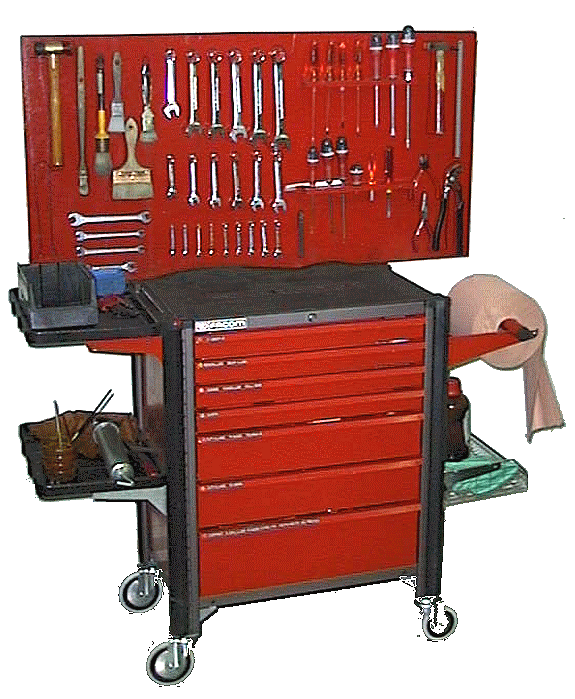Last update: April 16th, 2010
|
Calling these principles the "5S" is a good way to remember their meaning and content. What are 5S?Seiri
Sorting, keep the necessary in work area, dispose or keep in a distant storage area less frequently used items, unneeded items are discarded. Seiri fights the habit to keep things because they may be useful someday. Seiri helps to keep work area tidy, improves searching and fetching efficiency, and generally clears much space. Seiri is also excellent way to gain valuable floor space and eliminate old broken tools, obsolete jigs and fixtures, scrap and excess raw material.
SeitonSystematic arrangement for the most efficient and effective retrieval. A good example of Seiton is the tool panel. Effective Seiton can be achieved by painting floors to visualize the dirt, outlining work areas and locations, shadow tool boards. For improving changeover time with SMED or reduce machine downtime through Total Productive Maintenance (TPM) it is necessary to have tools at hand. So a specific mobile tool cart was designed. An other example of Seiton are "broom carts". As cleaning is a major part of 5S we custom made carts to hold brooms, mops and buckets. Several carts have specific locations and all employees can find them. SeisoCleaning. After the first thorough cleaning when implementing 5S, daily follow-up cleaning is necessary in order to sustain this improvement. Cleanliness is also helpful to notice damages on equipment such as leaks, breakage and misalignment. These minor damages, if left unattended, could lead to equipment failure and loss of production. Regular cleaning is a type of inspection. Seiso is an important part of basic TPM; Total Productive Maintenance and Safety matter through cleanliness is obvious. SeiketsuStandardizing. Once the first three S have been implemented, it should be set as a standard so to keep these good practice work area. Without it, the situation will deteriorate right back to old habits. Have an easy-to-follow standards and develop a structure to support it. Allow employees to join the development of such standards. Seiketsu helps to turn it into natural, standard behavior. ShitsukeFinally, to keep first 4 S alive, it is necessary to keep educating people maintaining standards. By setting up a formal system; with display of results, follow-up, the now complete 5S get insured to live, and be expanded beyond their initial limits, in an ongoing improvement way; the Kaizen way. The effect of continuous improvement leads to less waste, better quality and faster lead times.© Chris HOHMANN
|

| ||||||||||||||||||||||||||||||||
|
This page is a courtesy of ©hris HOHMANN - http://chohmann.free.fr/
| ||||||||||||||||||||||||||||||||||
